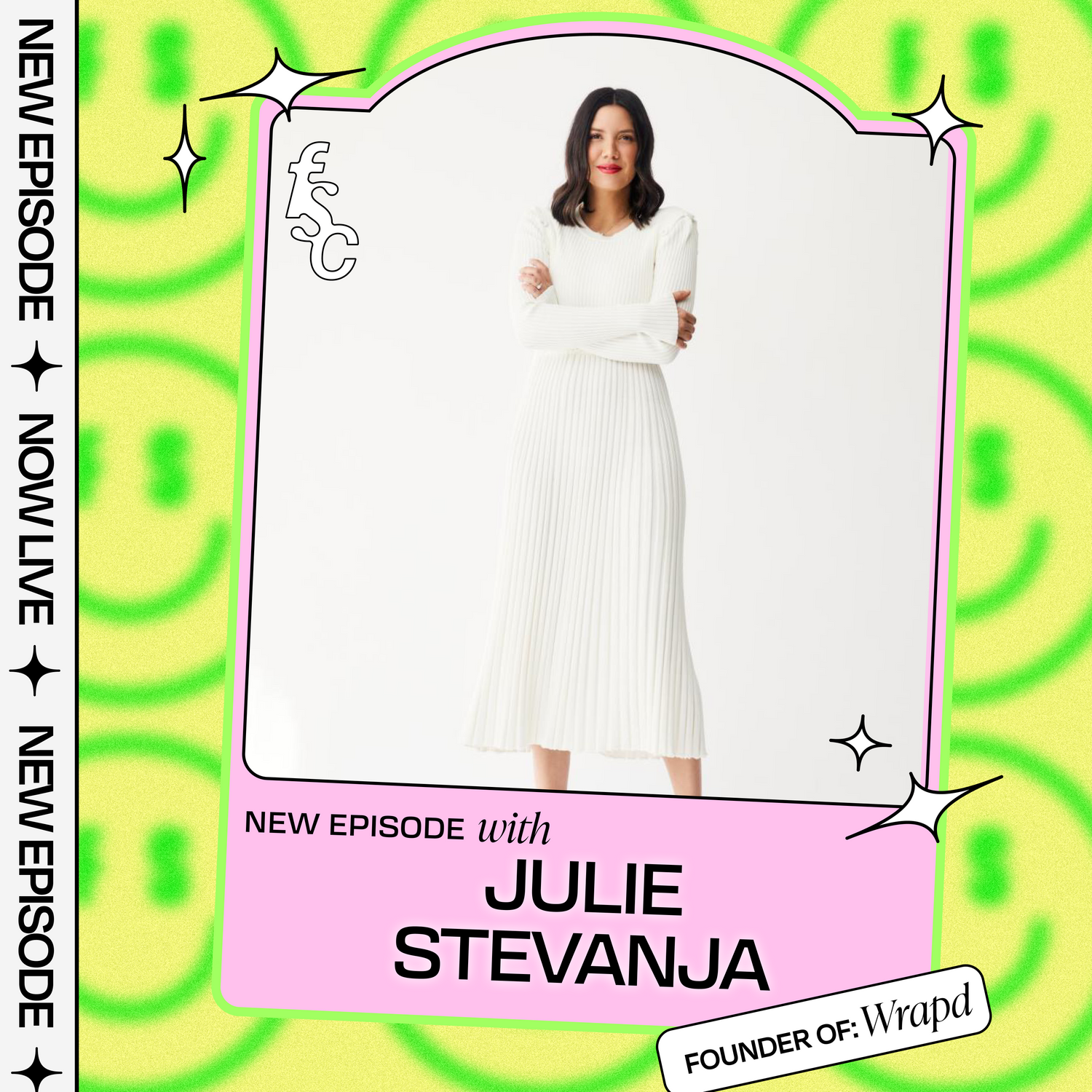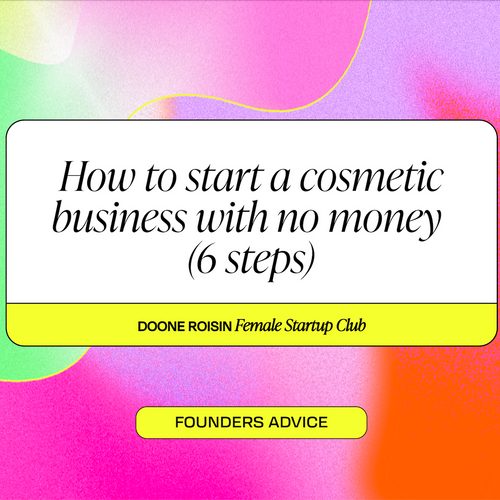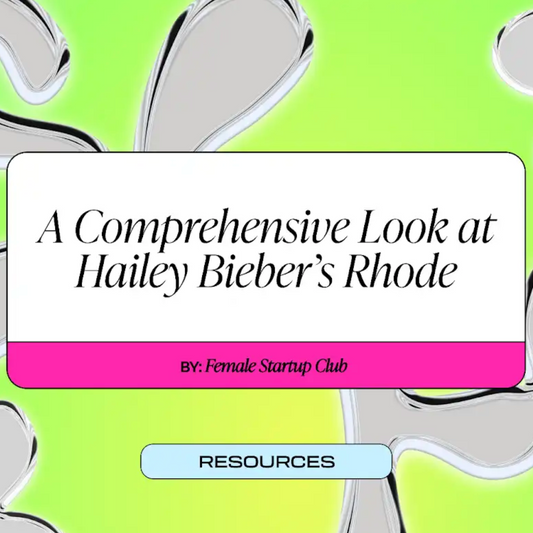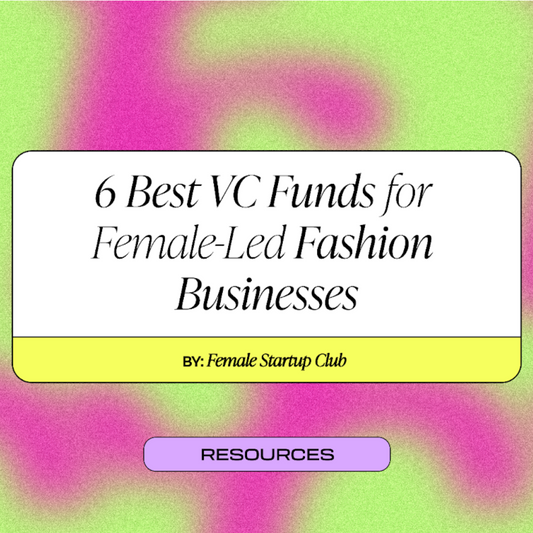This is Julie Stevanja for Female Startup Club.
Hello and welcome back to the show! It’s Doone here, your host and hype girl! If you’ve just found us - hi! Love this for you. And me. Every week we’re learning from some of the world’s most brilliant minds in business. Like the co-founder of Wrapd, Julie Stevanja (formerly known as Her Black Book). Julie and her twin sister Sali have been building businesses for women sine 2012 back when they first launched Stylerunner and now they’re back at it again taking the lessons they learnt with that business to build Wrapd. It’s a premium app for shoppers to discover deals and brands.
In this episode we’re talking through the learnings from Stylerunner and the difference between building a brand that’s e-commerce focused vs a tech company, and how that fits into the world of VC a well as a bunch of interesting gems when it comes to the playbook of launching an app.

The Founder Journey
Julie’s story began with Stylerunner back in 2012. Initially, it felt like a whirlwind of excitement, but she quickly learned that success often comes from slow, compounding growth. While there were thrilling moments, Julie emphasizes that building a business is a long journey. Year one might feel like a crazy ride, but it’s all about that steady incline and maintaining momentum over the years. In Julie’s words, “You always want to be growing faster,” but patience truly pays off in the end.
After relocating to London and working at a tech startup, she noticed the stark differences between growing ecommerce businesses and tech companies.
The Ecomm vs. Tech Debate
When it comes to ecommerce, the capital investment can be a significant hurdle. If you want to boost sales, you need to invest heavily upfront. The reality is that with physical products, you're often limited by the amount of capital you can secure. Julie experienced this firsthand while fundraising for Stylerunner. Investors tend to shy away from tying up too much money, especially in Australia, where the ecommerce scene isn't as vibrant.
In contrast, with a tech product or app like Rapd, the initial investment is crucial to develop the app and hire the right talent, but afterward, costs drop significantly. This scalability and higher margins make tech ventures incredibly appealing. Julie highlights that some of the richest people in the world come from fashion, proving there’s substantial opportunity in this space.
Lessons from Stylerunner
Julie shared that Stylerunner underwent five capital raises over eight years, which was a rollercoaster of continual investments. In the early stages, they experienced what’s called the “valley of death,” where they had to prove the business model would work. Unfortunately, Stylerunner eventually went into administration, but the brand was bought and later expanded into retail with over 20 stores.
The Lightbulb Moment with Rapd
So, how did Julie transition to Rapd? The lightbulb moment came when she realized that while affiliate marketing drove significant traffic to Stylerunner, there was a lack of premium options. Sali had the vision for a beautiful app that would round up coupons and cashback offers in the premium space. They spent the last eight months building it out, creating something special for shoppers.
Building the Business Model
Julie explained that with their Minimum Viable Product (MVP), they focused on iterating their app based on user feedback. Instead of reinventing the wheel, they drew inspiration from similar business cases to validate their concept. By creating a lean version of Rapd and launching it, they aimed to attract brands by simplifying their pitch and showcasing their unique selling proposition.
To prove their idea, they employed a low-cost marketing campaign to attract consumers to the app and observe their behavior. They invested several hundred thousand dollars into the MVP, but they also secured immediate investment, thanks to their experience as second-time founders. Building a network of trusted brands over the years made a significant difference.
Tips for Recruiting Your Beta Group
One of Julie's key pieces of advice is to recruit your true friends and supporters when launching your beta group. Bring in people who will be your cheerleaders and give you honest feedback. Don’t be shy about sharing your story; it's essential to connect with your early users.
She also suggested creative marketing strategies, like hosting competitions and giveaways. For instance, a $5,000 shopping spree can drive sign-ups quickly. Just ensure your marketing aligns with your brand values and offers real value to consumers.
The Importance of Adaptability
Julie highlighted that as a brand grows, they should always be in “growth hacker mode,” testing different marketing avenues and staying flexible. Just because something works today doesn’t mean it will work tomorrow. Keeping an open mind and exploring various channels can lead to exciting results.
For those who are bootstrapped, Julie emphasizes being bold and having fun with your brand voice. Allow potential customers to try before they buy, creating a frictionless experience that encourages engagement.
Advice for Aspiring Founders
Finally, Julie’s advice to aspiring entrepreneurs is golden: if you're not tech-savvy, find a tech co-founder. Yes, the journey can feel overwhelming at times, but persistence is key. Embrace every challenge and keep pushing forward.
As a bonus, Julie mentioned resources like Harvard Business Review, encouraging founders to keep thinking about their next steps.



